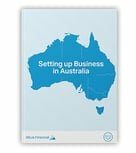
First off, reevaluate your business goals. Take a step back and decipher what will fuel the future growth of your business. A clear view of your goals will also help you to consider potential changes in your operating structure.
Second, it’s important to evaluate your communication with stakeholders. Communication is one of the biggest threats to a smooth transition of a business between owners.
Third, begin your strategic planning. Take a holistic view of where your business is today in order to guide where you want to be tomorrow. Strategic planning should include a mission statement, measurable goals, and strategies to help you achieve those goals.
Next, evaluate your business structure and consider the tax implications of your succession. It’s important to remember that the structure of your business can have a big impact on taxation. A succession plan should also include an updated business valuation. With a true and accurate understanding of your business’s value, you can set realistic long-term goals.
Finally, your succession planning process isn’t complete until you prepare successors to fill important roles. Find future leaders with the potential and capacity to carry on what you’ve started. Succession planning requires time and dedication, but is essential if you’re going to enjoy a smooth exit from your business.

/logo.png?width=194&name=logo.png)




/Altus%20Menu%20v%202%20Personal.png?width=136&name=Altus%20Menu%20v%202%20Personal.png)








